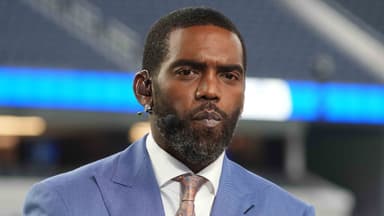The Dallas Cowboys’ revival started when Jerry Jones purchased the franchise from H.R. “Bum” Bright for $140 million in 1989 ($354.59 million inflation-adjusted as of 2024). Back then, the team came off a 3-13 record, their third-worst finish after going 0-11-1 in their inaugural season.
Advertisement
In order to nudge the franchise in the right direction, the new owner parted ways with their coach of 28 years, Tom Landry, and replaced him with Jimmy Johnson. He also fired general manager Tex Schramm and took on that role himself.
While the plan initially backfired with a 1-15 record in 1989, they won their first Super Bowl title three years later. After that breakthrough, the Cowboys added two more Lombardi trophies during the 1993 and 1995 seasons.
While those championships strengthened Jones’ credentials as an owner and general manager, his most impactful achievement was making all National Football League teams profitable. He achieved this by suing the league after finalizing a deal with Nike to sell officially licensed Cowboys merchandise.
For proper context, all NFL teams took an equal share of merchandise revenue in the early 1990s. Therefore, even if the Cowboys accounted for 25 percent of merch sales in 1994, the team took a cut of only 3.33 percent. This hurdle limited the team’s profitability, even if they cut operational costs in other areas.
After a 15-month battle, the courts sided with Jerry, which allowed other owners to pursue similar deals.
This exploded the revenue (and the valuations) of nearly every team in the NFL.
Average NFL team value:
∙ 1995: $160M
∙ 2004: $733M10/11 pic.twitter.com/ttUZE394up
— Tyler Webb (@tylermwebb) June 28, 2024
This reality led the Los Angeles native to push the boundaries by signing sponsorship deals with Nike, Pepsi, and American Express, bringing in nearly $100 million in additional revenue. However, the league took notice of these moves because of their existing partnerships with Reebok, Coke, and Visa, which, as one might notice, are direct competitors.
In effect, the NFL sued the Cowboys for $300 million. Subsequently, Jones filed a $750 million countersuit, claiming that all teams should be free to find sponsorship deals. Well, as fate would have it, Jones eventually won, leading to a surge in team revenues.
Jones’ Lawsuit Led to the Cowboys Becoming the NFL’s Most Valuable Franchise
Jones’ model increased the average team value from $160 million in 1995 to $733 million in 2004. However, while all franchises enjoyed the freedom to sign sponsorship deals without the league office’s interference, the Cowboys remained ahead of their counterparts in valuation.
Sportico values the Cowboys at $9.2 billion in 2024, the highest among all major American sporting teams. The second most valuable NFL franchise, the New York Giants, is at $7.04 billion. Naturally, the Cowboys’ valuation increased Jones’ net worth to $13.8 billion, making him the seventh-richest NFL principal team owner.
Notably, the club generated a whopping $1.05 billion in revenue two years ago, becoming the second franchise after FC Barcelona to achieve that feat worldwide.
The Cowboys’ revenue includes a naming rights deal with telecommunications holding company AT&T, worth up to $19 million annually. They also have sponsorship deals with daily fantasy sports and sports betting platforms like DraftKings and FanDuel.
The team’s in-field performance also helped elevate its price tag, and although they haven’t been to an NFC Championship game since 1995, they made the playoffs in four of the last six seasons. Under Mike McCarthy, the Cowboys posted their third-straight 12-win season last year.






